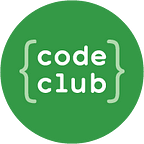How to take the first steps beyond block-based coding
While block-based coding like Scratch, is a fantastic way to get started, text-based coding is important for student growth. Text based coding will give your students experience in an environment used by professional programmers, and will help them build a coding foundation that has no limitations!
In our new Learning Path, Introduction to Python for Beginners, your students will learn how to code in Python to create visual and interactive artwork, animations, simulations, games, and more, over six coding projects.
Python is a great language to start text-based coding, as the syntax used is similar to the English language. It’s also a very popular coding language, championed by companies like Google and used in many of its applications. So, you’ll be teaching your students future-ready skills, for whatever career path they choose.
See how easy it is to move beyond blocks with this Learning Path.
Now let’s get down the the nitty-gritty!
Following are answers to questions you might have about the Introduction to Python Learning Path. If you would like to learn more about Learning Paths more broadly, including the pedagogy behind the paths, see an earlier blog we wrote here.
What does the Introduction to Python Learning Path focus on? And why is it good for beginners?
The Introduction to Python Learning Path focuses on creating digital visuals using the Python p5 library. This library is like a set of tools that allows you to get creative by using Python code to draw shapes, edit images, and create frame-by-frame animations. That makes it the perfect choice for beginners: they can develop their knowledge and skills in Python programming while creating cool visuals that they’ll be proud of.
What coding skills and knowledge will my students learn?
The first three projects are where the initial learning takes place. The key programming concepts covered in this path are:
- Variables
- Performing calculations with variables
- Using functions
- Using selection (if, elif and else)
- Using repetition (for loops)
- Using randomisation
- Importing from libraries
Students also explore aspects of digital visual media concepts:
- Coordinates
- RGB colours
- Screen size
- Layers
- Frames and animation
Students then develop these skills and knowledge by putting them into practice in the final three projects, where they add in their own ideas and creativity.
What software do students need to code these projects?
Like all Code Club projects, all you need is a web browser. In every project, starter code is provided in a free web-based development environment called Trinket, where students add their own code. The starter Trinkets include everything that students need to use Python and access the p5 library. The students don’t need to create an account or sign in to Trinket to complete the project. However, they will need to create an account if they would like to save their work.
No internet, no problem. The projects also include instructions for using a desktop-based programming environment, such as Thonny.
How long will the path take to complete?
The path can be completed in around six one-hour sessions, with one hour per project. However, the project instructions encourage students to upgrade their projects and go further. This means that young people might want to spend a little more time getting their projects exactly as they imagine them.
Can a student save their progress through the path?
Yes, if you or your students signs up for an account, progress will be saved. The account will also show what other projects on our website the young person has completed.
What can my students do when they finish this path?
Coming very soon is a ‘More Python’ Learning Path. In this path, students will move beyond the basics they learned in Introduction to Python. They will learn how to use lists, dictionaries, and files to create charts, models, and artwork. In the meantime, explore the collection of Python projects we have in our library.
Additional Resources
To help you teach this Learning Path , we’ve created this summary of the learning outcomes for each project. It also includes tips to extend learning in your sessions.
We’ve also created this certificate that you can give your students to recognise their completion of this Path.
Happy coding!
Natalie Falzon, Code Club Australia
